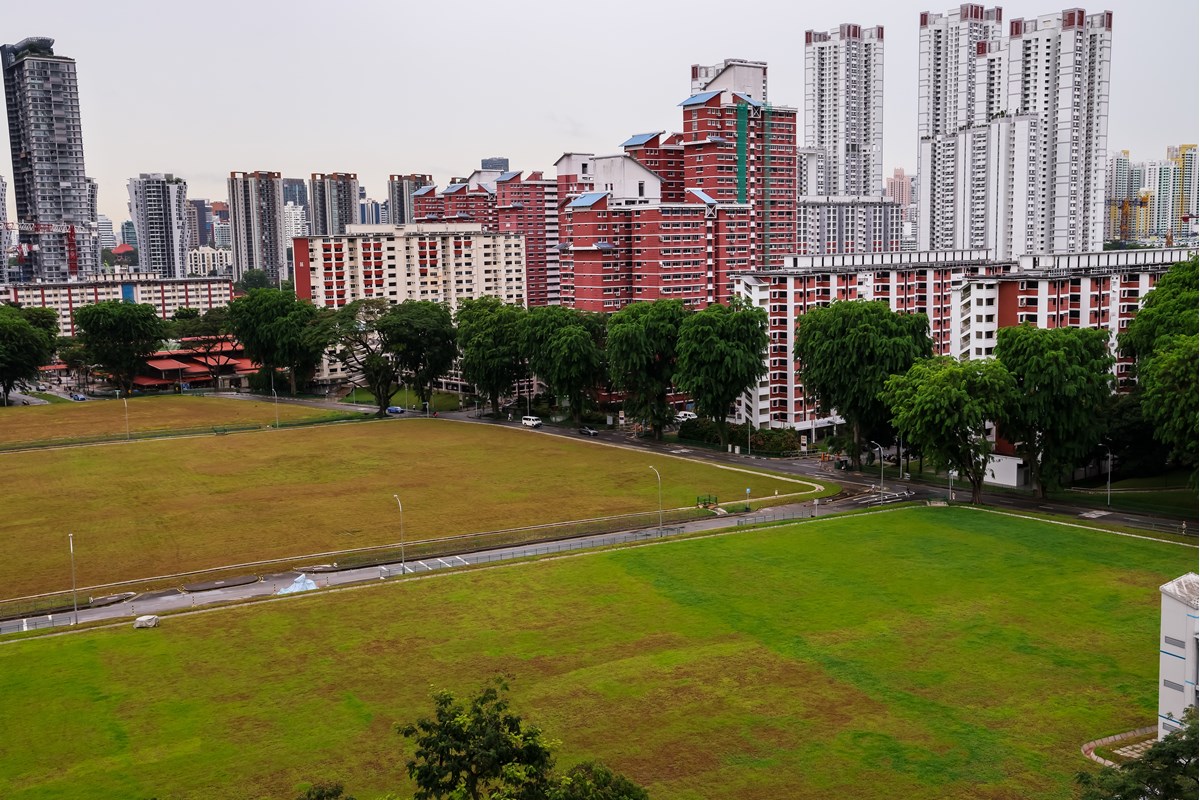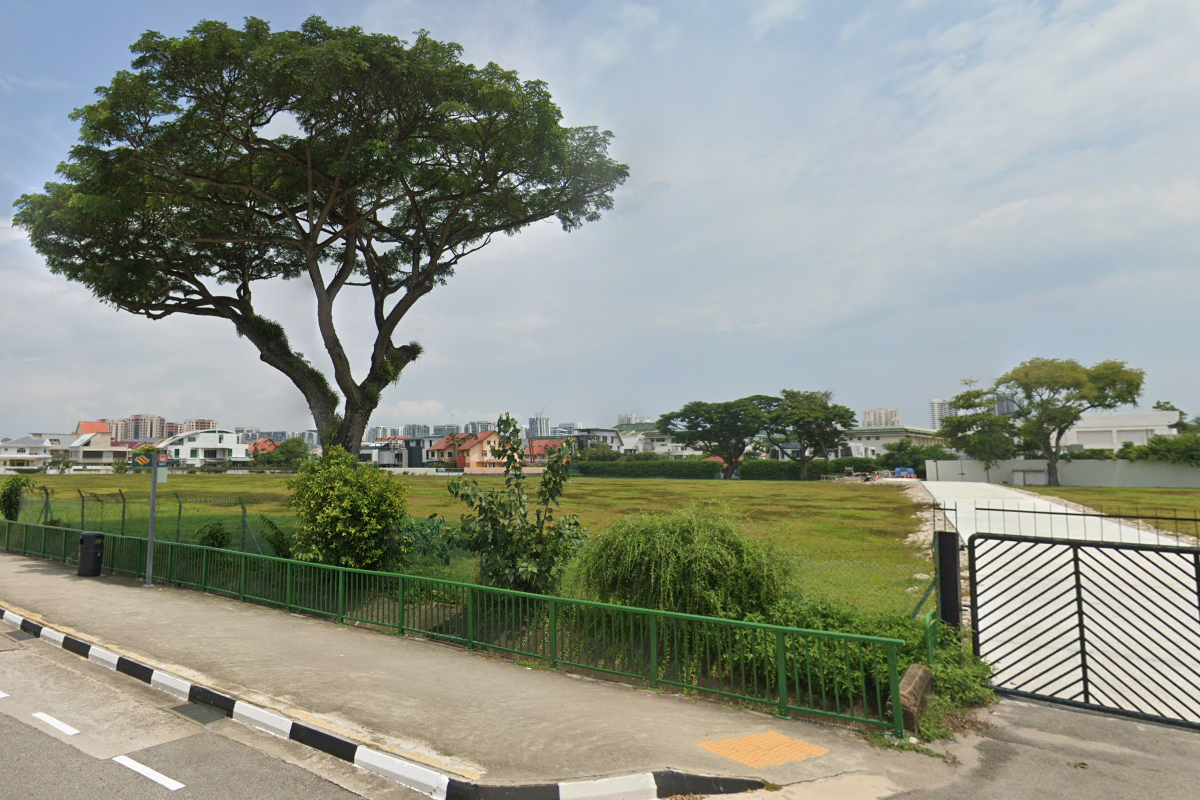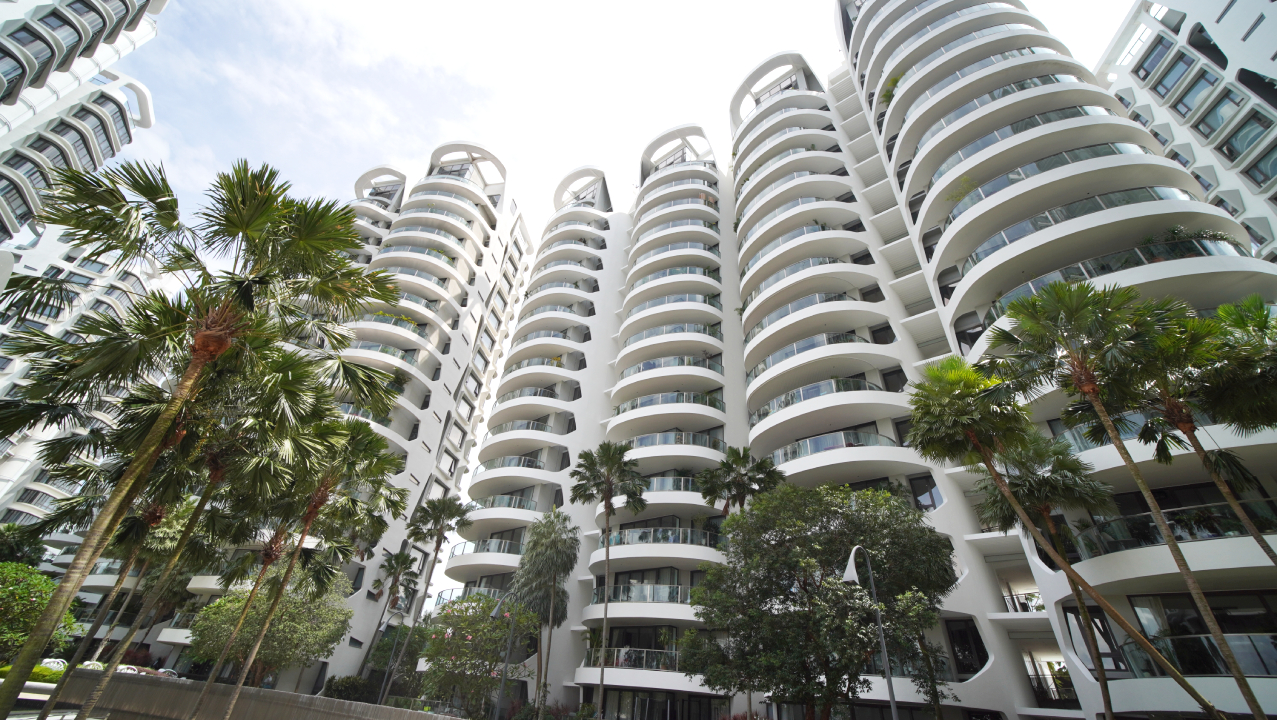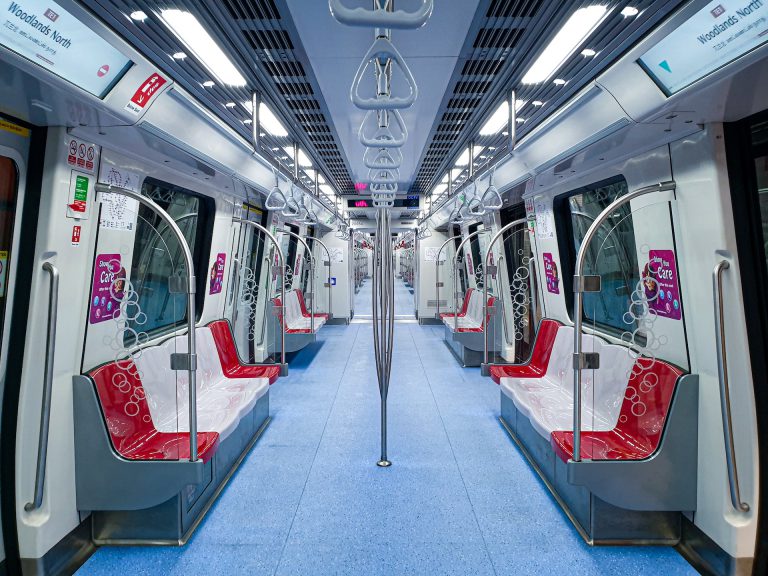Will New Launch Condo Prices Drop with Lower Land Costs? Don’t Bet on It.
- By Egan Mah Jixiang
- 6 mins read
- Private Residential (Non-Landed)
- 11 Jun 2024
In recent months, land bids for Government Land Sales (GLS) sites have fallen, with noticeably lower participation by developers. In the first five months of 2024, the average number of developers bidding for awarded sites with residential use fell to 2.4, down from 3.4 in 2H 2023 and the peak of 8.6 in 2021.
Chart 1: Average number of bidders for GLS sites*

Source: URA, ERA Research and Market Intelligence, *Sites zoned ‘Residential (Non-landed)’, ‘Residential and Commercial’, ‘Residential with Commercial on 1st storey’ and ‘White’
Land bids in recent months have been comparatively lower than those for previously sold sites that share similar locational attributes. The media has reported that some sites sold were sold at prices “below analyst’s predictions”. Moreover, the Marina Gardens Crescent site was not awarded as the $984 per square feet per plot ratio (psf ppr) was “too low”.
Below are some examples of recent GLS residential sites that sold for up to 32.0% less than some neighbouring developments.
Table 1: Recent GLS sites awarded previously and recently in similar locations

Source: URA, ERA Research and Market Intelligence 1. The site is zoned Residential with Commercial at 1st Sty. 2. Sites are in different districts, but are just 150m apart.
Could this change signal waning demand for GLS sites? Are developers exercising more caution? Will new launch prices finally fall?
Below, we explore the answers to these questions through the lens of 4 recent GLS sites, alongside the reasons why developers are unlikely to cut new launch prices.
Reason #1: The floor area harmonisation rule reduces sellable floor area in a development
Applying to all residential and industrial GLS sites launched for sale from 1 September 2022 onwards, the new Floor Area Harmonisation rule will see the following changes implemented:
- The Urban Redevelopment Authority, Singapore Land Authority, Building and Construction Authority and Singapore Civil Defence Force will measure all floor areas to the middle of the wall
- All strata areas will be included in Gross Floor Area (GFA).
- All voids will be excluded from the strata area.
As a result of these changes, spaces like air-con ledges and voids are no longer included as sellable spaces. But developers are unlikely to lower selling prices, even if they pay less for land. To put things into perspective, developers do incur expenses building void spaces and aircon ledges and hence they are likely to incorporate related costs into the selling price.
Table 2: Land prices for projects launched before and after the floor area harmonisation rule

Source: URA, ERA Research and Market Intelligence* Site is zoned Residential with Commercial at 1st Sty.
A case in point is Lentor Mansion, where units launched after the floor area harmonisation rule are priced higher per square foot than units of similar size and design at Lentor Modern. This is despite Lentor Mansion’s lower land cost of $985 psf ppr, compared to Mentor Modern’s $1,204 psf ppr (18.2% difference).
Table 3: Price difference for 2-bedroom units at Lentor Modern and Lentor Mansion

Source: URA, ERA Research and Market Intelligence
Reason #2: Developers expected to undertake higher risks for some sites
Higher Additional Buyer Stamp Duty (ABSD)
Since the Cuscaden Road site was awarded in May 2018, there has been three rounds of ABSD hikes on foreign buyers, raising the original rate to a hefty 60%. With developments in the Core Central Region (CCR) typically seeing more foreign buyers, developers are becoming more conscious about waning demand. Hence, they are lowering their bids to account for the current market conditions.
Image 1: Timeline of increases in ABSD for foreign buyers (non-Singapore permanent resident)

Source: IRAS, ERA Research and Market Intelligence
As demand from foreign buyers was high before July 2018, the developer of Cuscaden Reserve was more bullish in their bids.
However, with the market now cooled, developer sentiments are substantially dampened, resulting in the top bid for the Orchard Boulevard site being 32% lower than Cuscaden Reserve’s.
Depending on market conditions, further revisions to the ABSD rate could happen.
Consequently, developers must factor in such regulatory risks that could affect sales of units; this might involve setting aside funds for marketing or contingency costs.
Business risks arising from a new rental housing typology
Driven by evolving demographics and rising demand for rentals amongst Singaporeans, the URA recently introduced a new class of long-stay serviced apartments (SA2) in several of their newly released GLS sites.
With a minimum stay of three months, SA2s are intended to cater to tenants in need of housing for a period lasting longer than a typical hotel stay, but shorter than the usual 1-year lease for local rentals. Potential tenants for SA2 apartments may include foreigners on extended job stints, some younger Singaporeans who may choose to rent as a start, and homeowners waiting out their home completion or renovation.
Developers undertaking SA2 projects are required to either have hospitality expertise or to partner with parties with relevant capabilities. Furthermore, being an untested market, it may be challenging for developers to determine the demand for properties built under this new rental housing typology.

Zion Road, Parcel A (Source: Google Maps)
The Zion Road (Parcel A) site is the first site to pilot the new SA2 flats. It was sold for $1 billion ($1,202 psf ppr), 30.6% lower than the site sold at Jiak Kim Street (now Rivière), which sold for $955.4 million or $1,733 psf ppr in 2018.
Nevertheless, even with the comparatively lower land cost, developers for Zion Road (Parcel A) are not expected to reduce selling prices. On the contrary, they could even factor in holding costs and possible vacancies of the SA2 units, given uncertainty about their future profitability.
Larger projects may present higher risk of unsold units

Treasure at Tampines (Source: Sim Lian)
Although large residential projects offer enticing benefits like larger total revenues and potentially lower construction costs due to economies of scale, they can also be fraught with risks for developers who choose to tender for larger GLS sites. The Zion Road (Parcel A) site has a maximum GFA of 85,577 sqm, potentially yielding 735 units (excluding SA2 units). Meanwhile, the 455-unit Riviere’s GFA is only 51,231 sqm, 40.1% less.
This heightened risk traces back to Singapore’s policy of imposing ABSD on unsold units. Under this regulation, developers who fail to sell all units within five years of acquiring a GLS site face a hefty penalty of up to 35% of the land cost.
This need to manage risk associated with unsold stock makes developers unwilling to lower selling prices, even with lower land costs. Instead, they are more likely to maintain prices in exchange for managing common challenges associated with large projects. These challenges include longer construction runways and more rigorous project requirements.
Reason #3: Surge in construction demand could drive construction and labour costs higher
At present, Singapore’s construction industry is experiencing strong demand for public and private projects. The total projected contract value is between $32 billion and $34 billion in 2024, the highest since 2015.
Chart 2: Construction demand in Singapore

Source: data.gov.sg, ERA Research and Market Intelligence
Key contributors to construction demand include private sector projects from GLS site tenders and the expansion of Singapore’s two integrated resorts. Similarly, public projects like HDB Build-to-Order (BTO) flats, the Cross-Island MRT line, Changi Airport Terminal 5, and Tuas Port have also significantly contributed to this growth in demand.
This momentum is expected to continue with the Building and Construction Authority forecasting a steady rise in demand to reach between $31 billion and $38 billion per year from 2025 to 2028. This translates into an increase of between 4.7% to 28.4% on the 10-year average of $29.6 billion.
With the increased volume of construction, competition for labour and materials has intensified. The Tender Price Index, which tracks the price movement of construction components such as materials and manpower, has grown by 32.4% between 2020 and 2023.
Although labour pressure has eased with approximately 40% more work permits issued for the construction, marine shipyard, and process industries, skilled labour shortages could remain a significant constraint.
Other cost pressures, such as higher-for-longer interest rates, persistent inflation, higher Goods & Services Tax, and heftier property taxes due to higher land values, also make price cuts from developers unlikely.
Additional Costs for Sustainability Considerations
In line with the cost-push factors highlighted above, developers could also incur extra expenditure due to certain requirements for the awarded GLS sites. These requirements incur additional consultancy and surveying fees for special impact assessment studies which adds to the developers’ costs. Examples of recent GLS sites necessitating special impact assessments are Upper Thomson (Parcel B).

Image: Upper Seletar Reservoir
Due to Upper Thomson (Parcel B)’s proximity to the Central Catchment Nature Reserve, developers must incorporate biodiversity-sensitive strategies as part of their proposed developments. This is to ensure Springleaf’s rich biodiversity is protected, as well as to strengthen ecological connectivity along the Khatib Nature Corridor.
Additionally, the site houses a conserved building, the former Seletar Institute, and an open communal space that must be restored and integrated into the resulting residential development.
So, what could cause new home prices to fall?
In the event that new home prices decline, we posit two reasons that could result in such an outcome.
A major economic shock leading to a decline in household income
Major economic shocks, leading to job losses and declining household income, may trigger price corrections in Singapore’s property market. This is evident from past cycles where the property market saw adjustments during the three major financial crises since the 1980s. Since then, the Government has implemented multiple rounds of cooling measures, as well as tightened borrowing conditions to encourage financial prudence.
Chart 3: GDP growth versus Property Price Index

Source: Singstat, ERA Research and Market Intelligence
Singapore starts experiencing a decrease in population
Like many developed countries, Singapore is experiencing an aging population with more than half of Singapore’s residents aged 65 years or older. Currently, the country’s working population is bolstered by non-residents who play a vital role in sustaining an aging workforce. Unless the government tightens its foreign labour policy, Singapore is unlikely to see a substantial population decline in the medium term, a factor that could influence housing demand, and by extension, new home prices.
Chart 4: Total Population versus Proportion of Singapore Residents (65 years and older)

Source: Singstat, ERA Research and Market Intelligence
Conclusion: Lower land costs may not necessarily translate into lower selling prices for upcoming new launches in the foreseeable future
While lower prices for GLS sites in the past year may appear to point towards lower new launch prices on the horizon, this is unlikely to be the case in the current market, as well as for the foreseeable future.
Although comparatively lower GLS site prices were observed in the past year, as seen through the examples above, this trend is unlikely to persist in the current market or the near future.
At present, lower land bids by developers can be attributed mostly to growing project costs and risk premiums. This is especially so for larger projects and those incorporating new home typologies or criteria.
Due to these factors, developers are more cautious about their land bids, and more selective about the sites they are bidding on. However, developers are expected to keep prices for new launches steady – as they undertaking greater risks while balancing buyer’s affordability.
Furthermore, with more GLS sites being awarded since 2021, many developers now possess ample land stock and are focusing on selling their existing new home supply. Unless the upcoming GLS sites possess attractive qualities (e.g. proximity to amenities or good schools nearby), they will be unlikely to attract a large number of bids by developers, much less aggressive ones. This raises the likelihood of GLS land prices staying stable for the foreseeable future.
This stability in land prices, suggests that private home prices are likely to remain steady; this aligns with URA’s goal of meeting homebuyer demand and achieving market stability, thus ensuring a healthy, well-balanced property market going forward.
Disclaimer
This information is provided solely on a goodwill basis and does not relieve parties of their responsibility to verify the information from the relevant sources and/or seek appropriate advice from relevant professionals such as valuers, financial advisers, bankers and lawyers. For avoidance of doubt, ERA Realty Network and its salesperson accepts no responsibility for the accuracy, reliability and/or completeness of the information provided. Copyright in this publication is owned by ERA and this publication may not be reproduced or transmitted in any form or by any means, in whole or in part, without prior written approval.





